12 Must-Do Gardening Tasks for August
With July’s gardening tasks hopefully in the rear-view mirror, we can enjoy a less hectic pace for August. However, there are still plenty of gardening tasks for August to do. As summer is starting to wind down, August is a good time to start preparing for fall while still caring for plants that are still going strong. Staying on top of key gardening jobs now will ensure your yard continues looking its best through the end of summer and into the cooler months ahead.
There are some essential gardening tasks that need your attention in August. This includes harvesting seeds from spent blooms, deadheading faded flowers, watering camellias and rhododendrons, and properly pruning lavender, rambling roses, and other plants. It’s also time to propagate woody herbs from cuttings, sow hardy annuals for next year, and take steps to keep container plants thriving.
In the following table, we have summarized 12 essential jobs that commonly require attending to during August, although the makeup of your garden will actually dictate what you need to do.
| Task | Description |
|---|---|
| 1. Seed Collection | Harvest seeds from spent blooms to sow next year. Choose open-pollinated seeds, know when seeds are ripe, collect on a dry day, and clean and dry seeds properly. Popular plants for seed saving include Aquilegias, Sweet peas, Love-in-a-mist, Marigolds, and Basil. Proper harvesting and storage are key. |
| 2. Deadheading | Regularly remove faded flowers to encourage new buds and blooms. Use sharp pruners, focus on prolific bloomers, deadhead as soon as blooms fade, and use proper techniques. Deadheading extends the flowering period and promotes plant health. |
| 3. Watering Camellias and Rhododendrons | Propagate woody herbs from cuttings in late summer. Select healthy stems, trim, and dip in rooting hormone, plant in a rooting medium, and keep moist. Rooted cuttings can be transplanted into individual pots and eventually into the garden. |
| 4. Pruning Lavender | Provide thorough watering to prepare for next year’s blooms. Focus on newly planted specimens, check soil moisture, and water near roots, and consider rainwater. Adequate water ensures vibrant blooms for the next season. |
| 5. Pruning Rambling Roses | Prune rambling roses after the first bloom cycle to encourage new growth and flowers. Avoid pruning into old wood, remove old flowering wood, and shorten side shoots. Proper pruning promotes healthy growth and improved flowering. |
| 6. Caring for Pots and Hanging Baskets | Care for container plants by watering and deadheading. Water thoroughly, check soil moisture, water near roots, and use mulch. Deadhead spent blooms and feed with liquid fertilizer. Diligent care keeps container plants thriving and blooming. |
| 7. Propagating Woody Herbs | Propagate woody herbs from cuttings in late summer. Select healthy stems, trim and dip in rooting hormone, plant in a rooting medium, and keep moist. Rooted cuttings can be transplanted into individual pots and eventually into the garden. |
| 8. Sowing Hardy Annuals | Sow hardy annuals in August for early summer color next year. Prepare the planting site, sow seeds directly, keep soil moist, thin seedlings, and mulch beds. Hardy annuals sprout in fall, overwinter, and bloom vigorously in spring. |
| 9. Automatic Watering Systems | Install automatic irrigation systems to keep plants hydrated while away. Drip irrigation and soaker hoses are effective options. Proper watering systems ensure consistent moisture and prevent diseases, making them crucial for travelers. |
| 10. Mowing Wildflower Meadows | Trim back wildflower meadows in late summer to rejuvenate growth and maintain diversity. Mow after native plants have gone to seed, set the stage for fall bloomers, and promote a healthier meadow ecosystem. |
| 11. Propagating Penstemons | Propagate penstemons from softwood cuttings for new plants. Select healthy shoots, strip lower leaves, use rooting hormone, plant in a rooting medium, and transplant when rooted. Propagation allows you to expand your penstemon collection. |
| 12. Removing Spent Annuals | Remove tired annuals that have finished flowering to prevent self-seeding. Identify prime candidates for removal, pull by hand, and consider replanting for fall interest. Removing unwanted self-seeders maintains a balanced garden. |
Getting to Grips with Your Garden in August.
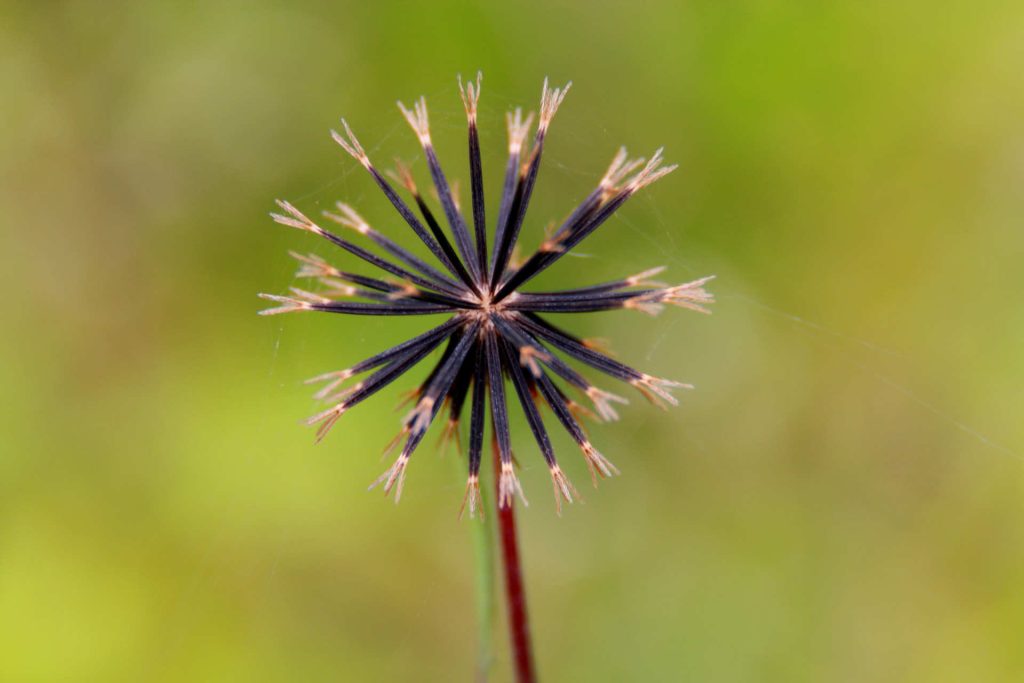
Maintaining your yard in August is the key to enjoying continuous color from your blooms and preparing for a beautiful fall landscape. Taking care of these jobs now will keep your garden looking lush, vibrant, and healthy through the end of summer.
Of course, there are many tasks that could be done but we have looked at the 12 that are generally considered essential. Below, we have listed out each individually and given a detailed plan of attack to get the jobs completed.
#1. Seed Collection: Harvesting the Bounty of Your Garden
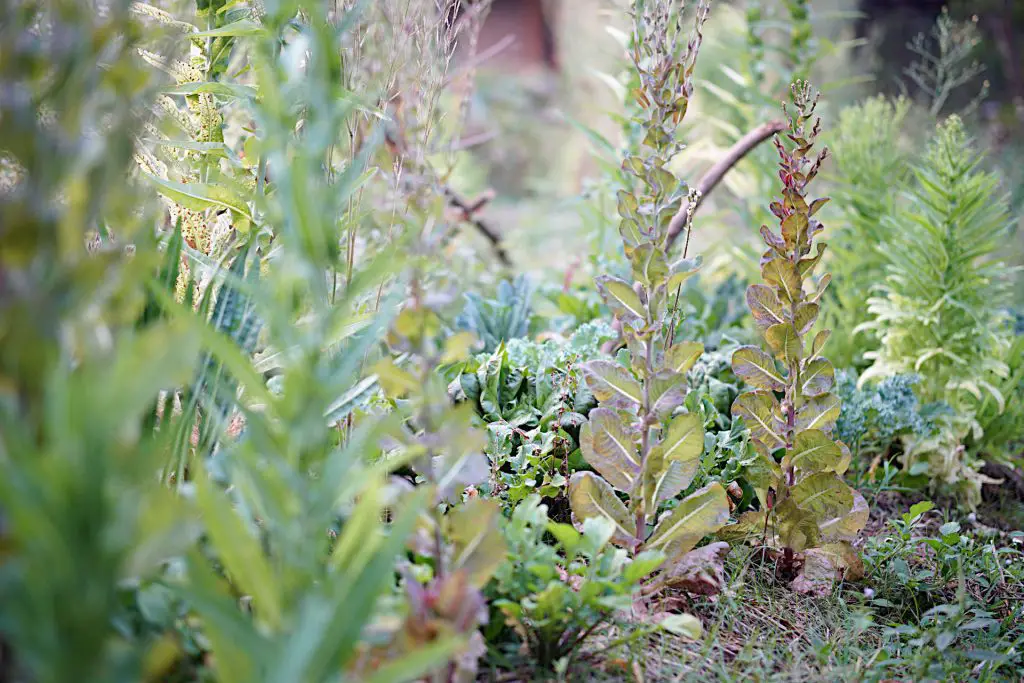
As summer draws to its end, many flowers and vegetables in your garden will start going to seed. August is the perfect time to collect these seeds so you can sow them again next year. Harvesting and saving seeds is rewarding and can also save you money.
The best way to start seed collecting in August is:
- Choose open-pollinated seeds – Focus on heirloom varieties or older open-pollinated seeds. Hybrid seeds may not grow true to type when replanted.
- Know when seeds are ripe – Seeds are ready when flower heads, pods or fruit are spent and dry. Seeds should easily separate from pods or fruit.
- Collect on a dry day – Choose a dry, breezy day to collect seeds. Humidity can contribute to mold growth.
- Popular plants for seed saving – Some easy plants for seed saving include:
- Aquilegias – Harvest seeds when the flower heads are dry.
- Sweet peas – Allow pods to dry on vines before harvesting seeds.
- Love-in-a-mist – Collect flat, black seeds once pods turn brown.
- Marigolds – Wait for dry, brown flower heads, then rub to remove seeds.
- Basil – Harvest entire dried flower heads, then remove seeds.
- How to harvest seeds – Use proper technique to avoid losing seeds:
- Shake dried flower heads into a paper bag
- Snip off dried pods and collect seeds as they spill out
- Rub flower heads between your fingers over a bowl to separate seeds
- Cleaning and drying seeds – Place the harvested seeds in a single layer on coffee filters or screens. Allow to dry for 1-2 weeks, then store in envelopes or jars in a cool, dry place.
Saving seeds from your garden is very rewarding. With proper harvesting and storage, you’ll have an abundant supply of seeds ready to sow next spring.
#2. Deadheading: Keeping Your Blooms Fresh and Vibrant
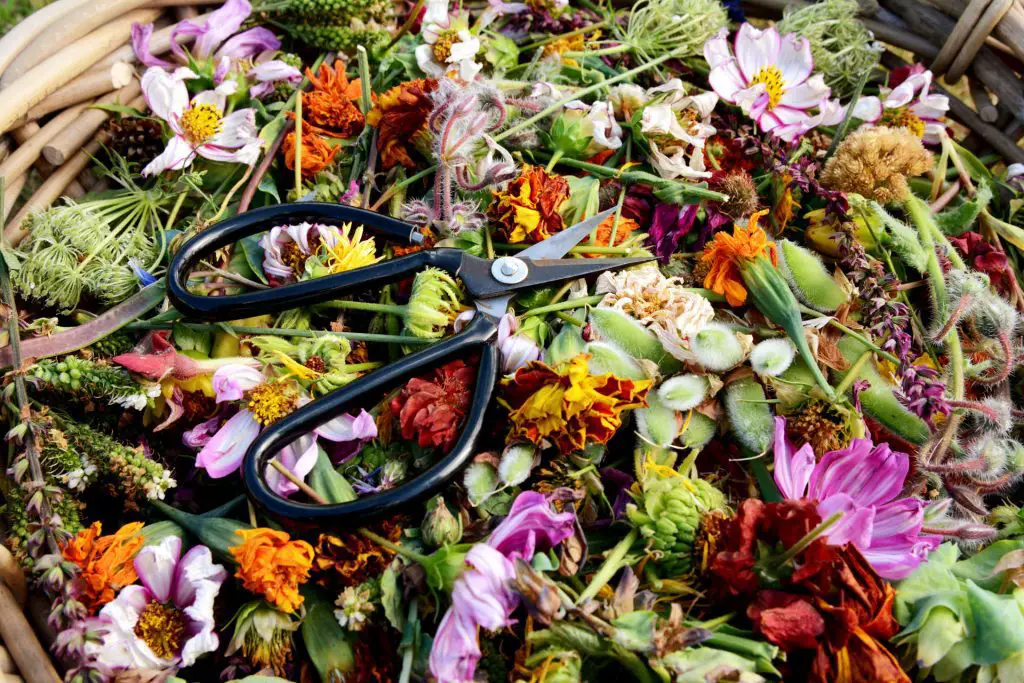
Deadheading spent blooms is an essential task to keep up with in August. Regularly removing faded flowers encourages plants to continue producing new buds and blooms. This extends the flowering period through late summer and early fall.
For effective deadheading in the garden:
- Use sharp pruners or scissors – Cut each spent bloom just above a leaf node or new bud using clean, sterilized tools.
- Focus on prolific bloomers – Deadhead plants that bloom continuously, like dahlias, zinnias, impatiens, and petunias. This stimulates further blooming.
- Target key areas – Prioritize deadheading on highly visible plants like those in flower beds, window boxes, and containers.
- Optimal timing – Deadhead blooms as soon as they fade, before seed heads form. This redirects the plant’s energy into new buds.
- Technique matters – Use the right technique for the plant:
- Pinch or snip above leaf nodes or new buds
- Cut back to a lateral leaf or branch
- Shear off clusters on spiky plants like lavender
- Extend the bloom season – Deadheading can prolong flowering by weeks or months on:
- Dahlias – Deadhead above a set of leaves to encourage more blooms until frost.
- Annuals – Zinnias, marigolds, cosmos, and others will bloom until frost with regular deadheading.
- Perennials – Shasta daisies, coneflowers, and salvia rebloom when old blooms are removed.
- Promote plant health – Prevent diseases by removing spent blooms that can harbor pests and diseases.
Staying ahead of deadheading makes a big visual impact in the garden. Take some time each week in August to rejuvenate your beds, borders, containers, and baskets by pruning off old blooms. Your garden will thank you with a flush of new, vibrant flowers.
#3. Watering Camellias and Rhododendrons: Preparing for Next Year’s Blooms
Late summer is an important time to water camellias and rhododendrons to set the stage for an abundance of blooms next spring. Proper watering now helps form flower buds.
Following are some best practices for watering camellias and rhododendrons in late summer:
- Provide thorough watering – Give plants a deep watering at least once a week during dry weather. Soak the soil around the roots.
- Focus on newly planted specimens – Prioritize watering any new plantings that need extra moisture as they establish.
- Check soil moisture – Check the soil moisture 4-6 inches down before watering. Water when the top few inches become dry.
- Watch for drought stress – Signs of underwatering include wilting, scorched leaf edges, and premature leaf drop.
- Water near roots – Avoid wetting foliage, watering at the base of plants instead. This prevents fungal diseases.
- Use mulch – Mulch beds with 2-3 inches of bark chips or pine needles to retain soil moisture.
- Consider rainwater – Collect rainwater from downspouts in barrels to use for watering. Rainwater is better for camellias than tap water.
- Water in the early morning – Water first thing in the morning to allow moisture on leaves to dry off during the day, discouraging diseases.
- Types of camellias to water – Prioritize watering sasanqua and japonica camellia varieties to ensure bountiful winter blooms.
- Rhododendron species to water – Focus on watering popular azalea varieties and large-leaf rhododendrons like R. catawbiense.
Adequate water in August and September ensures camellia and rhododendron buds develop fully for a spectacular floral display in late winter and early spring. Make watering a priority now to set up these acid-loving plants for the next blooming season.
#4. Pruning Lavender: Maintaining a Compact and Bushy Shape
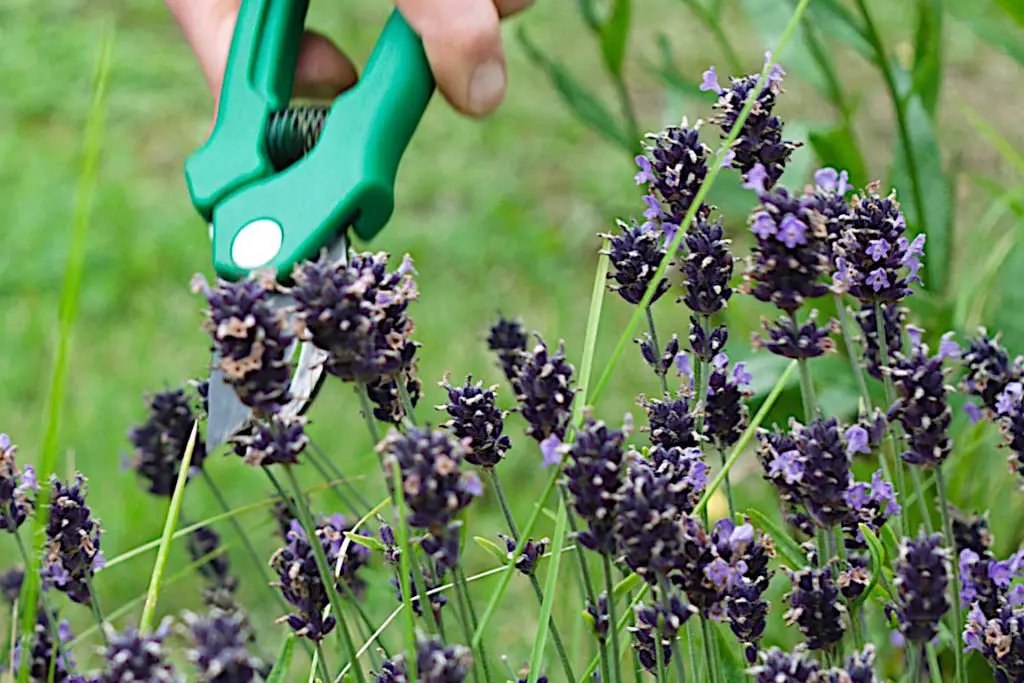
August is the perfect time to prune lavender to keep plants looking their best. Pruning stimulates bushy new growth and prevents woody, leggy plants.
It is helpful to prune lavender to encourage the future shape of new growth :
- When to prune lavender – Prune soon after blooms fade, typically in August. Pruning later risks damage from fall frosts.
- Avoid cutting into old wood – Never prune into the woody part of lavender stems, only pruning back green shoots.
- Remove flower stems – Cut back upright flower stems by about two-thirds of their length. Make cuts just above leaves or leaf nodes.
- Shape plants – Use bypass pruners or hedge shears to shape lavender into a compact mound, removing errant stems.
- Clean tools first – Wipe tools with rubbing alcohol before pruning each plant to prevent the spreading of diseases.
- Remove thin or leggy stems – Thin out congested plants and prune away long, leggy stems back to their base.
- Promote bushy regrowth – The pruned stems will quickly generate bushy, compact new shoots before winter.
- Cut back cautiously – Conservative pruning is best. Never shear plants severely as this can damage them.
- Disinfect after pruning – Spray plants lightly with hydrogen peroxide after pruning to prevent infection.
- Fertilize later – Apply compost tea or organic fertilizer 4-6 weeks after pruning to aid recovery.
Timely pruning gives lavender a rejuvenated, tidy shape heading into winter. Just be careful not to prune too aggressively. Proper summer pruning maintains a full, robust lavender plant that rebounds with vigorous new growth.
#5. Pruning Rambling Roses: Encouraging New Growth and Flowers
Rambling roses thrive with a bit of pruning attention in late summer after their first flush of blooms has faded. Selective cutting back at this time removes old flowering wood and encourages the development of new shoots and flower buds just in time for fall blooming.
Properly pruning rambling roses maintains a healthy, vibrant plant by promoting air circulation and light penetration. It also keeps growth tidy and contained within its allotted space in the landscape. Avoid overly shearing roses like a hedge, which can damage them. Instead, thinning and shortening select canes is best.
When to prune is important – wait until immediately after the first round of flowers fades in mid to late summer. Pruning earlier removes developing buds for the next bloom cycle. Pruning later in the fall risks damaging new growth injured by cold weather.
Start by identifying older stems that have already flowered and fruited this season. These thick, woody canes can be selectively removed at ground level to make room for new canes.
Shorten long side shoots emerging off the main flowering canes. Cutting these lateral branches back by one-third to one-half their length encourages bushier growth.
Remove any thin or weak shoots coming up from the base, as well as dead or damaged stems. This helps improve air circulation.
Also use the opportunity to shape the rose, removing errant growth beyond its allotted space. Clean pruning shears are best for removing unwanted stems and branches without leaving stubs.
With rambling roses neatly pruned back after the first bloom cycle, they will rebound with a flush of fresh new shoots and flower buds in time for continued fall color.
#6. Caring for Pots and Hanging Baskets: Keeping Your Container Plants Thriving
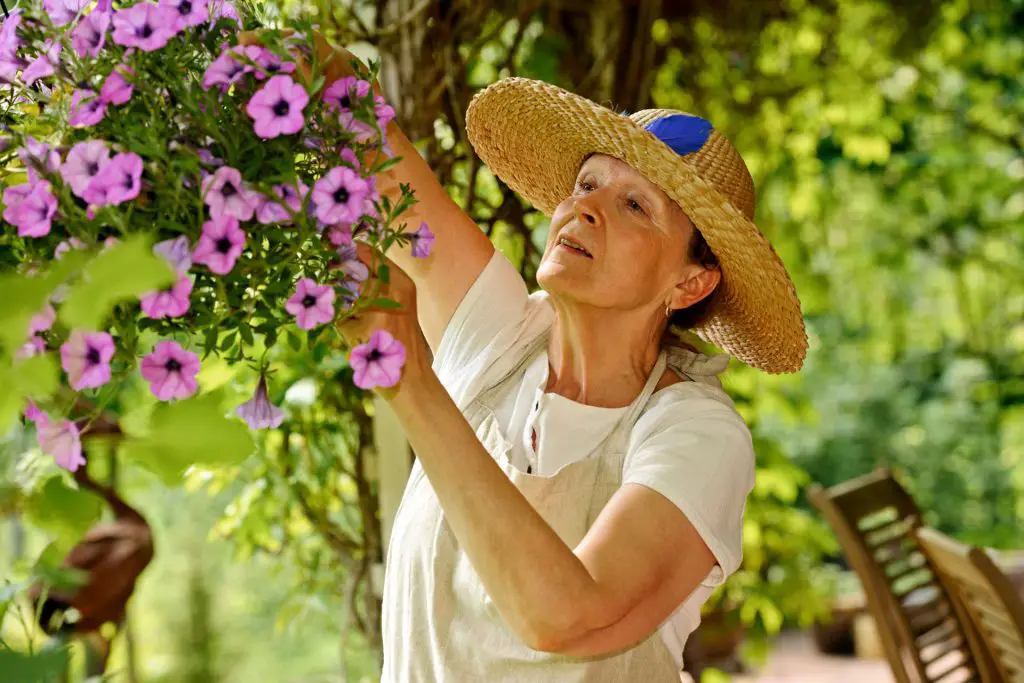
Container plants in pots and hanging baskets require careful attention through late summer to sustain beauty and vigor. Two key tasks are watering thoroughly and deadheading spent blooms.
Watering is crucial for container plants. Their roots have limited soil volume so plants dry out faster, especially on hot, windy days. Check soil moisture daily. Water whenever the top inch of soil becomes dry until water drains from the bottom. Prioritize watering in the early morning or late afternoon. Avoid wetting foliage.
For hanging baskets, check the soil moisture by feeling through the drainage holes. Water until it drips freely from the bottom. Hanging baskets may need watering twice a day during hot, dry spells. Consider lining the basket with plastic to help retain moisture longer.
Grouped containers should be spaced apart to allow air circulation and prevent the spreading of disease between plants. Self-watering pots are excellent options for travelers. Some provide reservoirs for a week or more of water.
Deadheading is also important for pots and hanging baskets. Removing spent blooms before seed heads form redirects energy into new buds and blooms. Snip off old flowers just above a set of leaves or new buds using clean pruners.
For prolific bloomers like petunias, impatiens and fuchsia, deadhead individuals spent blooms as needed to encourage ongoing flowering. For spiky plants like lavender or penstemon, shear off clusters of faded blooms.
Also, feed container plants with a liquid fertilizer like fish emulsion or compost tea every 2-3 weeks. This provides a nutritional boost. Consider repotting rootbound plants into larger containers.
Diligent care pays off for container plantings. Daily monitoring of water needs combined with regular deadheading and fertilizing will keep potted plants looking their best through the end of summer.
#7. Propagating Woody Herbs: Growing New Plants from Cuttings
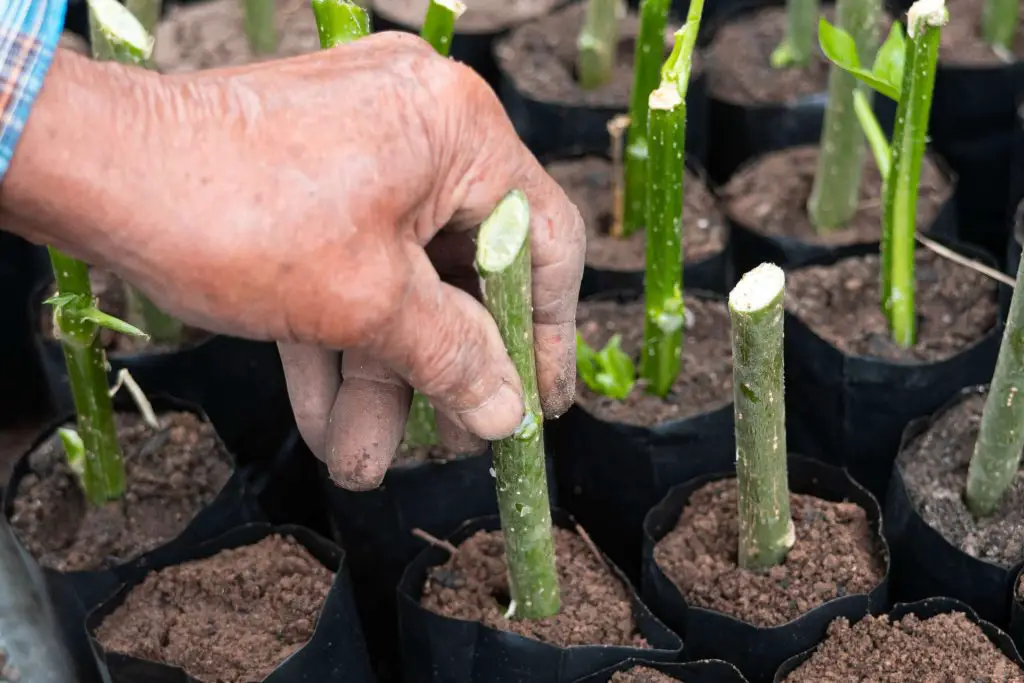
Late summer is an ideal time to propagate many woody herbs by taking stem cuttings. Herbs like lavender, rosemary, thyme, and sage are quite easy to propagate this way. Growing new plants from cuttings allows you to multiply your favorites.
Select healthy, non-flowering stems for taking cuttings. For lavender, choose shoots from this year’s new growth. Take 3-6-inch long cuttings from the tips of the stems using sharp, sterile pruners or a knife. Remove the bottom leaves, leaving a few leaves at the top.
Rooting hormone can help speed root development. Dip the bare end of the cuttings in rooting hormone powder before inserting them into the rooting medium. However, herbs will root without it.
Perlite, vermiculite or a peat-sand mix work well as a rooting medium. Use clean containers with drainage holes, like cell packs or small pots. Insert cuttings just deep enough to stand upright and provide support.
Water gently to moisten the rooting medium without dislodging cuttings. Place containers in a bright spot sheltered from direct sun. Draping plastic over the cuttings helps elevate humidity.
Check soil moisture regularly. Keep the rooting medium consistently damp but not soggy until roots develop. This takes 1-2 months on average. New top growth indicates rooting success.
Once cuttings are well rooted, transplant them into individual pots using a potting mix. Gradually expose them to more sun over 2-3 weeks. The new herb plants can be planted in the garden in the fall.
Propagating lavender, rosemary, and other woody herbs from stem cuttings is simple. Take cuttings in summer from healthy, non-flowering shoots, and you’ll soon have new plants identical to the parent.
#8. Sowing Hardy Annuals: Planning for Early Summer Color
One important August gardening task is sowing hardy annuals in beds, borders or containers to provide bountiful color next summer. Hardy annuals easily sprout in fall, overwinter as small seedlings, then bloom vigorously in early summer.
Good choices for August sowing include:
- California poppies – Cheerful golden, orange or red blooms. Thrives in poor, dry soil.
- Larkspur – Elegant spires of pink, white, or blue flowers. Grow in the sun.
- Cornflower – Classic blue blooms work nicely in bouquets. Handles partial shade.
- Bachelor’s buttons – Prolific clusters of flowers in shades of blue, purple, and white.
- Sweet alyssum – Dainty white, pink or lavender blooms; pleasant honey-like fragrance.
Prepare the planting site by clearing weeds and working compost or fertilizer into the top few inches of soil. Select a site with full sun to part shade and good drainage.
Sow seeds directly in the garden. Follow the package directions for planting depth, which is usually 1/4 inch. Space seeds or clusters 4-6 inches apart. Press seeds gently into the soil and water gently to settle them in.
Keep the seed bed consistently moist until sprouts appear. Thin overcrowded seedlings for proper spacing. Mulch beds lightly to retain moisture and control weeds. Water when the top inch of soil dries out.
Hardy annuals sown now readily sprout before winter. The young plants remain green through winter and then burst into bloom as temperatures warm in spring. Next year’s garden will shine with cheery flowers planted this August!
#9. Automatic Watering Systems: Keeping Your Plants Hydrated While You’re Away
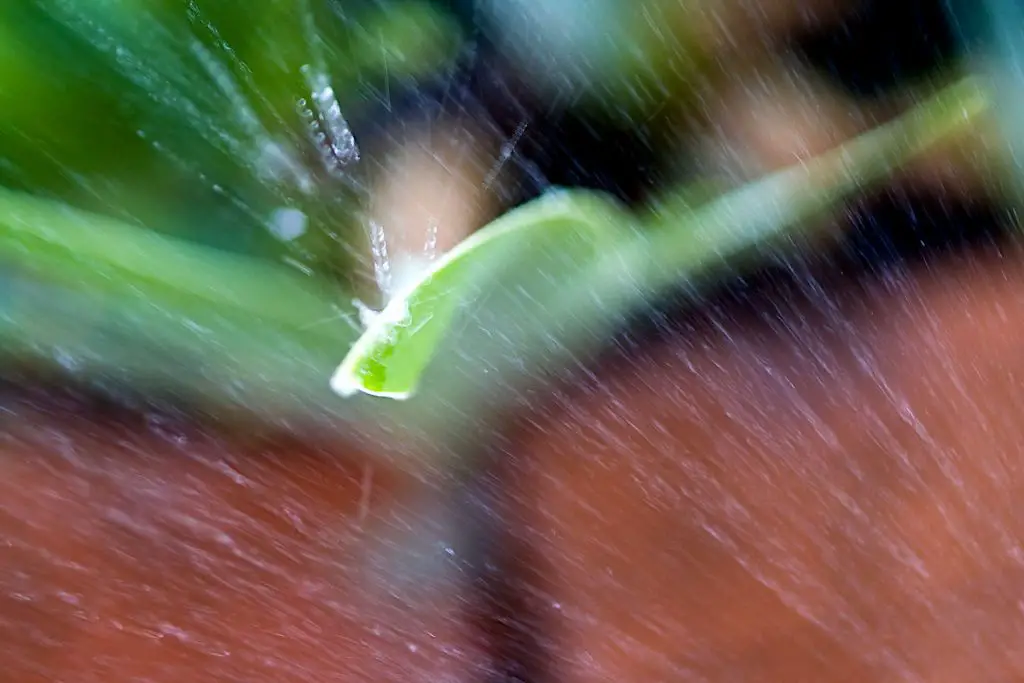
Installing an automatic irrigation system is a smart idea if you plan to be away from home during the gardening season. Automatic watering ensures container plants and gardens receive consistent moisture while you travel without relying on neighbors or friends.
Drip irrigation is one excellent option. This uses a network of tubes or hoses with emission points that release water slowly at the base of plants. Kits are available for easily setting up a drip system in planting beds or containers.
Drip irrigation conserves water since there is little evaporation or runoff. It also prevents disease by not wetting the foliage. Systems can be hooked to an automatic timer to release water on a preset schedule.
For container plants, consider self-watering pots or a window-sill watering system that automatically dispenses water as needed. Self-watering hanging baskets are also available.
Soaker hoses that release water through tiny perforations are another handy option. Soaker hoses can be snaked throughout beds and borders. They provide a consistent, even watering pattern.
During local hosepipe bans, most drip or trickle irrigation systems are exempt from restrictions, but always check with your local water board. Drip systems, soaker hoses, and self-watering pots use water sparingly.
Investing in an automatic watering system provides peace of mind if going away mid-gardening season. Container plants stay hydrated, and garden beds maintain consistent moisture to keep everything growing and blooming through summer.
#10. Mowing Wildflower Meadows: Encouraging New Growth and Diversity
If you have a wildflower meadow or native planting, August is a good time to trim it back using a string trimmer or scythe. This helps rejuvenate growth and maintain diversity by preventing aggressive plants from taking over.
Mowing after native plants have gone to seed allows them to self-sow for the next year. It also sets the stage for fall bloomers like asters and goldenrods.
When mowing, set the trimmer or scythe height to 6-8 inches. Wear protective goggles and clothing. Walk at a steady pace, being careful not to scalp or damage crown growth at ground level.
Make one pass over the entire area, mowing in different directions. Avoid mowing on a windy day when cuttings could blow onto adjacent properties.
Rake up and remove cut material if it is thick and unsightly. Compost it or dispose of it as yard waste. Some homeowners mow over cuttings again to finely shred and mulch them back into the meadow.
Spot treatment of invasive or aggressive plants may be needed. For example, goldenrod, Queen Anne’s lace, and aster can spread rapidly. Cut back or spot treat overgrown clumps.
Late summer mowing helps rejuvenate native meadows and prevent a monoculture by reducing dense, competitive growth. This maintains floral diversity, provides bare spaces for fall and winter seedlings, and sets the stage for another vibrant showing next year.
In following years, meadows may only need mowing once every 2-3 years after being established. But mowing in the first couple of years keeps fast-spreading species in check.
#11. Propagating Penstemons: Growing New Plants from Softwood Cuttings
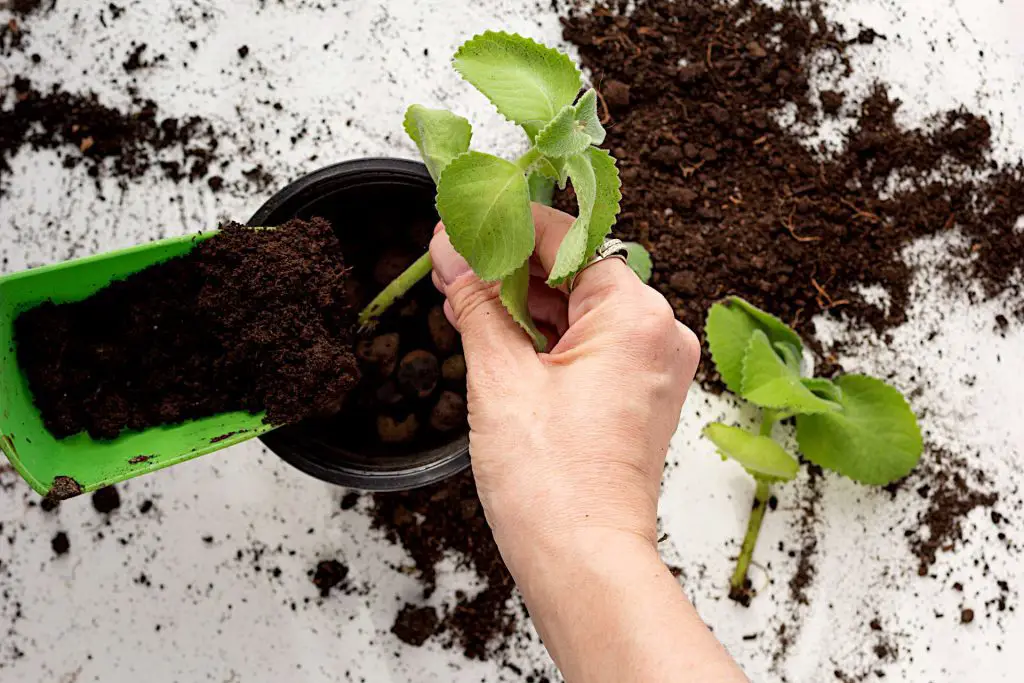
Late summer is the prime time to propagate penstemons by taking softwood cuttings from the tips of non-flowering shoots. Penstemons are excellent perennials for beds and borders, providing a profusion of tubular flowers loved by pollinators. Propagating from cuttings is a simple way to make more plants.
Select healthy, vigorous shoots around 4-6 inches long. Use sharp, clean pruners or garden scissors to detach the stem right below a set of leaves. Take cuttings early in the morning while stems are fully turgid.
Trim off the lower leaves, leaving just a few leaves at the tip. This reduces moisture loss while cutting roots. Dip the stripped end into rooting hormone powder to promote quicker root initiation. However, penstemons will root without it.
Insert the penstemon cuttings into a sterile potting mix like perlite or vermiculite or a peat-sand rooting medium. Gently firm the cuttings and water lightly. Place the pot in an area with bright, indirect light out of direct sun.
Keep the rooting medium evenly moist but not sopping wet. Rooting takes 4-6 weeks on average. New leaf growth is the first sign that rooting was successful.
Once roots are well established, pot up the newly propagated penstemons into individual containers using potting soil. Water thoroughly. Gradually introduce the new plants to the sun over a week or two to harden them off before transplanting them into the garden in early fall.
With proper care, 70-80% of penstemon cuttings should successfully root. Taking softwood cuttings in summer provides an easy way to expand your penstemon collection at little cost.
#12. Removing Spent Annuals: Managing Self-Seeding in Your Garden
As summer winds down, it’s a good time to pull out tired annuals that have finished flowering for the season. Removing spent plants you don’t want to self-seed prevents them from popping up everywhere next spring.
Some prime candidates for removal include:
- Marigolds – These hardy annuals drop copious seeds that sprout abundantly, sometimes where not wanted.
- Cosmos – Beautiful when controlled, but the cosmos will self-sow rampantly if not removed after flowering.
- Zinnias – These tend to cross-pollinate, so seeds may not come true to variety if left to self-sow.
- Poppies – Papery seed pods release thousands of tiny seeds leading to excessive sowing.
- Sweet peas – Heirloom varieties readily self-seed but often revert in form and color.
Pull spent plants by hand or use a trowel to uproot them entirely. Add uprooted annuals directly to a compost bin or yard waste bag.
Certain self-seeding annuals like calendulas, bachelor buttons, and larkspur are welcome additions to cottage gardens. But evaluate each plant based on your own garden’s needs. Leaving cosmos and zinnias to self-sow often leads to a jungle!
The area can then be replanted for fall interest. Some options include:
- Pansies, violas, kale, and ornamental cabbage for color.
- Lettuce, arugula, spinach, and other greens for harvest.
- Bulbs like tulips, daffodils, or allium flourish when planted in fall.
Preventing rampant self-sowing now means next year’s garden won’t be overrun by unwanted seedlings. Be selective in what annuals you remove or allow to drop seeds.
Additional Gardening Tasks You Can Do in August
There are of course many more important gardening tasks you can do August, below are a few more that you might want to consider:
| Task | Summary |
|---|---|
| Dividing Perennials | Divide overcrowded perennials to rejuvenate and expand your garden. Dig up clumps, separate them into smaller sections, and replant. Dividing maintains plant health, encourages new growth, and enhances blooms. |
| Controlling Weeds | Keep weeds in check by regular hand-pulling, mulching, or using natural weed killers. Preventing weeds maintains the aesthetics of your garden, reduces competition for resources, and prevents weed seed formation. |
| Pruning Summer-Blooming Shrubs | Prune shrubs that have finished flowering in summer to improve shape and control growth. Remove dead or diseased wood, thin out dense growth, and shape shrubs for next year’s blooms. |
| Harvesting Vegetables and Fruits | Harvest ripe vegetables and fruits to enjoy fresh produce. Regular harvesting promotes continued growth, prevents overripening, and encourages more yield throughout the season. |
| Monitoring Pest and Disease | Keep an eye out for pests and diseases in your garden. Regularly inspect plants, identify issues, and apply appropriate treatments. Monitoring ensures early intervention and prevents widespread damage. |
| Collecting Rainwater | Set up rainwater collection systems to store water for your garden. Collecting rainwater conserves water resources, provides plants with natural irrigation, and reduces your water bill. |
| Deadheading Bulb Flowers | Remove faded flowers from bulb plants to divert energy to bulb development. Deadheading prevents seed formation, encourages healthy bulb growth, and improves the overall appearance of the garden. |
| Fertilizing Container Plants | Feed container plants with balanced liquid fertilizers to maintain their health and vigor. Regular fertilization ensures that container plants have the necessary nutrients for continuous flowering. |
| Cleaning and Sharpening Tools | Clean and sharpen gardening tools to keep them in good condition. Well-maintained tools are more efficient, reduce the risk of disease transmission, and make gardening tasks easier and more effective. |
| Planning for Fall Bulb Planting | Research and plan for fall bulb planting. Choose bulb varieties, decide on planting locations, and prepare the soil. Planning ahead ensures a successful and visually appealing spring bulb display. |
If they are relevant, by adding the above additional gardening tasks into your August routine, you can further enhance and improve your garden ready for fall..
Looking Forward to Fall
Speaking of fall, as August comes to a close, your eyes as a gardener should be looking ahead to preparations for September’s gardening jobs and the rest of fall season beyond. While caring for late summer blooms, it’s also time to plan and plant for autumn interest in the garden.
Here are some tips for getting a head start on fall gardening tasks:
Evaluate fall bloomers – Take stock of where you may need more fall flowers. Goldenrod, asters, mums and sedum provide late season color. Shop for new plants or divide existing clumps.
Plant spring bulbs – Choose bulbs like tulips, daffodils, hyacinths, and allium that flourish when planted in fall. Prepare beds, amend soil, then plant bulbs at proper depth before winter.
Sow winter greens – Direct sow lettuce, kale, arugula, spinach, and other tasty greens. They’ll mature for harvest during cooler fall weather.
Prep for tree planting – Schedule to plant new trees in early fall. Research types suited to your climate. Prepare planting sites, amend soil, and layout irrigation.
Prune shrubs and trees – Late summer is the ideal time to prune certain trees and shrubs like Japanese maples. Pruning when dormant stimulates growth in spring.
Refresh garden beds – Pull out tired mid-summer annuals and replace them with cool-weather choices like pansies, ornamental kale, or cabbage.
Water trees and shrubs – If rainfall is lacking, keep watering evergreens, trees, and shrubs through fall until the ground freezes.
Fertilize lawns – Early to mid-fall is the best time to fertilize and aerate lawns for vigorous growth next year.
Clean up beds – Remove dried-up plants, deadhead, and pull weeds. Cut back excessive self-seeders. Tidy the garden for winter.
Planning ahead for fall gardening sets you up for a colorful autumn landscape. Addressing key tasks like planting, pruning, and bed care ensures your yard transitions seamlessly from summer to winter.
Final Thoughts
Late summer presents prime opportunities to prepare your garden for fall while still caring for summer blooms and plants. By staying on top of important gardening tasks in August, you can extend the flowering season, keep plantings looking their best, and set the stage for autumn displays and next year’s growth.
Properly pruning shrubs, trees, and summer-blooming perennials is critical for maintaining plant health and encouraging rebloom. Deadheading spent flowers channels energy into new buds. Caring for container plants with attentive watering and fertilizing keeps them flowering strongly.
It’s also time to anticipate fall by sowing hardy annuals for early summer blooms next year and incorporating ornamental edibles like lettuce and kale. Planning ahead for bulb planting, shrub pruning and buying new trees means you’ll be ready for fall gardening tasks before you know it.
The garden in late summer is a place of transition. With diligence and proper late-season care, your landscape will segue gracefully from summery annuals and perennials into asters, mums, and other fall favorites. Before you know it, vibrant spring bulbs will be emerging again. By sticking to good gardening practices now, you’ll be rewarded with ongoing beauty through every season.
